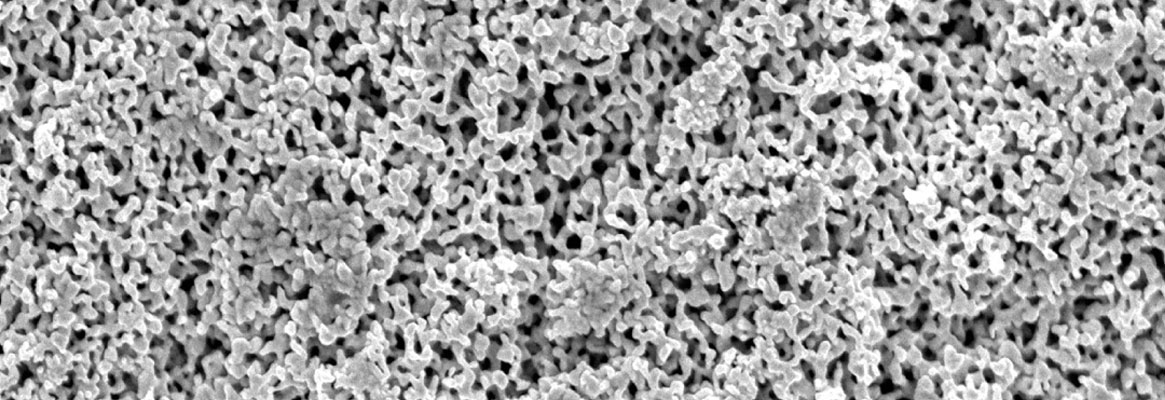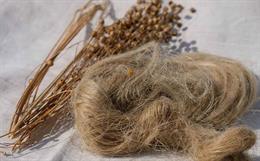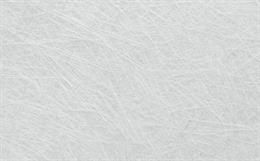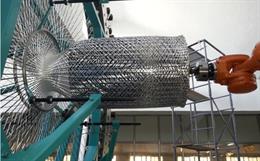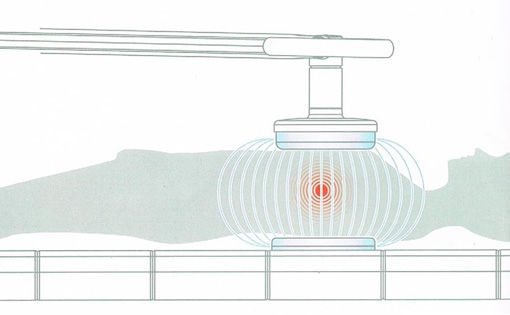Most conventional commercial fibers are intrinsically highspecific surface materials, i.e., they have high surface/volume or surface/massratios (generally around 0.1 m2/g). However, we envision a need formuch higher specific surface fibers which can be incorporated with conventionaltextiles as well as with other structures like coatings, laminates, blends andadditives, enabling the miniaturization and/or invisibility of devices andsensors.
By producing nanometer size pores inelectrospun ultra-fine fibers we are creating fibers with very high surfacearea to mass ratios for a variety of uses.
Examples of applications ultra-high specific surface fibersinclude chemical conversion, solid support catalysts, selective separation,membrane supported smart materials, scaffolds for tissue/cell growth andmembranes for immobilizing biological and pharmacologically significant agentsand molecules. It is highly probable that unanticipated but other useful properties may be discovered for these fibers to expand the applications of textiles to areasthat currently do not exist. Since these fibers have very high specific surface,much smaller quantities should be needed to achieve the targeted functions.
In building the knowledge base for developing this technology,we are exploring two approaches (see Scheme at bottom) to create ultra-finefibers with specific surfaces 2 to 3 orders of magnitude higher thanconventional fibers:
usingelectrospinning technology to increase surface features (roughness, shape) andreducing fiber diameter (to about 100nm) through use of additives and solvents.
creatingabundant nanometer-size pores (nano-pores) within the fiber through phaseseparation spinning of two polymers of differential solubility.
Fiber Size and Surface Features
Ultra-high specific surface fibers can be made by electrospinningwhen charged to high voltages. During electro-spinning, polymer solutions ormelts overcome their surface tensions to form fine jets and, uponsolidification, fine fibers. Further development of this fiber formation process makes it highly desirable for forming fine fibers from a wide range of polymers some ofwhich cannot be converted into fibers via
conventional fiber spinning processes. The ability to process very small quantities of polymer, as low as sub-milligram levels, makes it possible to transform research-quantity polymer into fibers. Many challenges do exist, however, including generating fibers less than 100 nm in diameter on a continuous basis and with commercially viable efficiency.
Polymer Fibers with Varying Weight % of an Additive
We have recently found that we can alter fiber diameter, shape and surface roughness by changing the quantity of an additive in the electrospinning polymer solution (see Photos above).
Nanometer Pores
We were able to generate nanometer pores by electro-spinning organic polymer solutions of two organic soluble polymers (A and B), one of which (B) was also water-soluble. We found that by increasing the % of the water-soluble polymer B, we could dramatically lower fiber diameters from ~500 nm down to ~100 nm (see Photos be-low). The finer fibers have 200 times the specific surfaces of conventional fibers. From all mixtures these two polymers yielded ultra-fine cylindrical fibers of smooth surfaces and homogeneous dimensions.
Electrospun fibers from 8% organic AB polymer solution
The distinct thermal behaviors of individual polymers, detected by differential scanning calorimetry (DSC), con-firm a clear phase separation of the two polymers in the fibers. When the water-soluble polymer B is removed, the mass losses of 17%, 31% and 49% are very close to the masses of polymer B in the original fibers. Because Fourier transform infrared (FTIR) detected only the presence of polymer A, we concluded that the differential solubility of polymers A and B was the key to complete removal of the phase-separated B.
Fiber diameters were between 50 nm and 200 nm, ac-cording to scanning electron microscopy images. The fibrous form and porous membranes are fully retained upon prolonged exposure to aqueous media. Transmission electron microscopy (TEM) images show additional details of the fiber surfaces, i.e., rough surfaces of the as-spun fibers and significantly striated ridges and grooves on the water treated fibers (see Photos below). The removal of polymer B leaves long and narrow striations with widths around 20 nm. Most interestingly, the fine features on both fibers consist of small spherillites and pores with diameters around 5 nm or less. Small angle X-ray scattering data also reveals the average size of the phase separated domains to be 20 nm.
Preliminary experiments using a liquid inclusion method show that inter-fiber porosity can be con-trolled between 0.3 to 0.95. Porosity within the fibers also significantly increases with the removal of polymer B. Removal of polymer B significantly increases the intra-fiber pore volume (50% from 0.26 cc/g to 0.37 cc/g) and specific surface (three fold from 18.9 to 49.7 m2/g) of the fibers, according to gas absorption measurements. The diameters of these nano-pores range from 8 to 60 nm, de-pending upon the methods and substrates.
Our results thus far indicate that
- Electrospinning of solvent-compatible, yet phase-separated, polymers gives uniform fibers with high efficiency.
- Fiber sizes and inter-fiber porosity are easily controlled by polymer compositions and solution properties.
- Differential solubility removes phase-separated domains and generates nanoporosity.
Contributing Graduate Students: Lifeng Zhang, Corine Cicile (UCal Davis)
Industry Interactions: 2
Government Interactions: 1
Project Web Address:
http://trc.ucdavis.edu/textiles/ntc%20projects/C03.CD01s.12.html
For Further Information:
1. H.L. Schreuder-Gibson, P.W. Gibson, and Y.L Hsieh, Trans-port properties of electrospun nonwoven membranes, International Nonwovens Journal, 11(2): 21 (2002)
2. H. Liu and Y.-L. Hsieh, Ultra-fine Fibrous Cellulose Membranes from Electrospinning of Cellulose Acetate, Journal of Polymer Science, Polymer Physics, 40:2119 (2002).
3. H. Liu and Y.-L. Hsieh, Surface Methacrylation and Graft Co-polymerization of Ultra-Fine Cellulose Fibers, Journal of Polymer Science, Polymer Physics 41:953 (2003).
4. J. Xie and Y.-L Hsieh, Ultra-high surface fibrous membranes from electrospinning of natural proteins: casein and lipase enzymes, Journal of Material Science 38: 2125 (2003)
5. H. Chen and Y.-L. Hsieh, Dual sensitive hydrogel composites, the Fiber Society, Lake Tahoe 120 (Oct 2001).
6. Y. Wang and Y.-L. Hsieh, Cellulose substrates funcationalized by diacrylchloride, the Fiber Society, Lake Tahoe 117 (Oct 2001)..
7. Y.-L.Hsieh, Ultra-high Surface Membranes from Natural Proteins and Enzymes, Polymer Fibres, Manchester UK (Jul, 2002).
8. Y.-L. Hsieh, Nano-Porous Materials from Natural Polymers, invited paper, USDA Nano-Scale Science and Engineering Workshop, Washington DC (Nov 2002).
9. H. Chen and Y.-L. Hsieh, Functionalization of deacetylated cellulose acetate (DCA) membranes by poly(acrylic acid)brushes, Division of Polymer Chemistry, ACS225th National Meetings, New Orleans, 23, Polymer Preprint 2003 44(1):520 (Mar 2003).
To read more articles on Textile, Industry, Technical Textile, Dyes & Chemicals, Machinery, Fashion, Apparel, Technology, Retail, Leather, Footwear & Jewellery, Software and General please visit http://articles.fibre2fashion.com
To promote your company, product and services via promotional article, follow
this link: http://www.fibre2fashion.com/services/article-writing-service/content-promotion-services.asp

